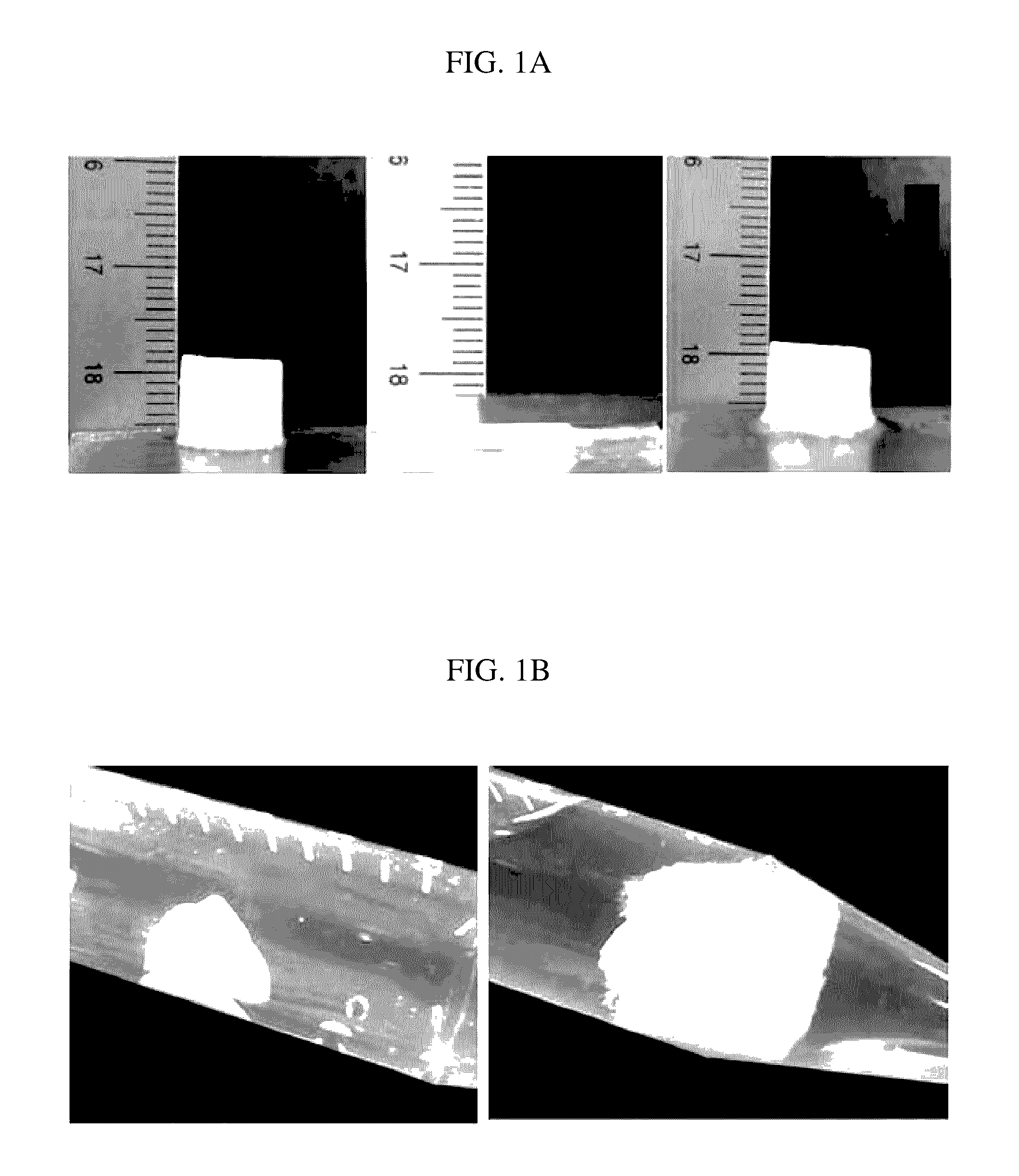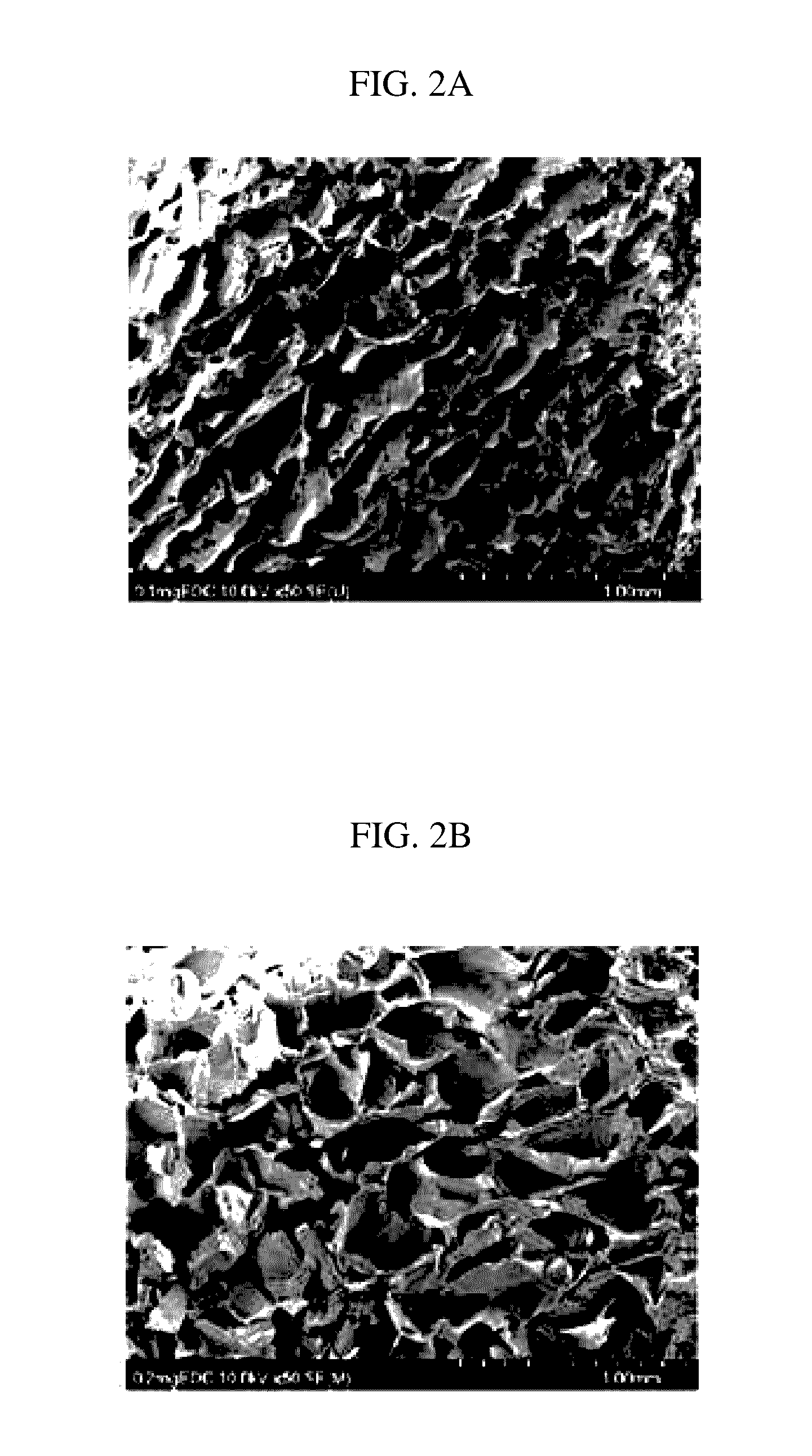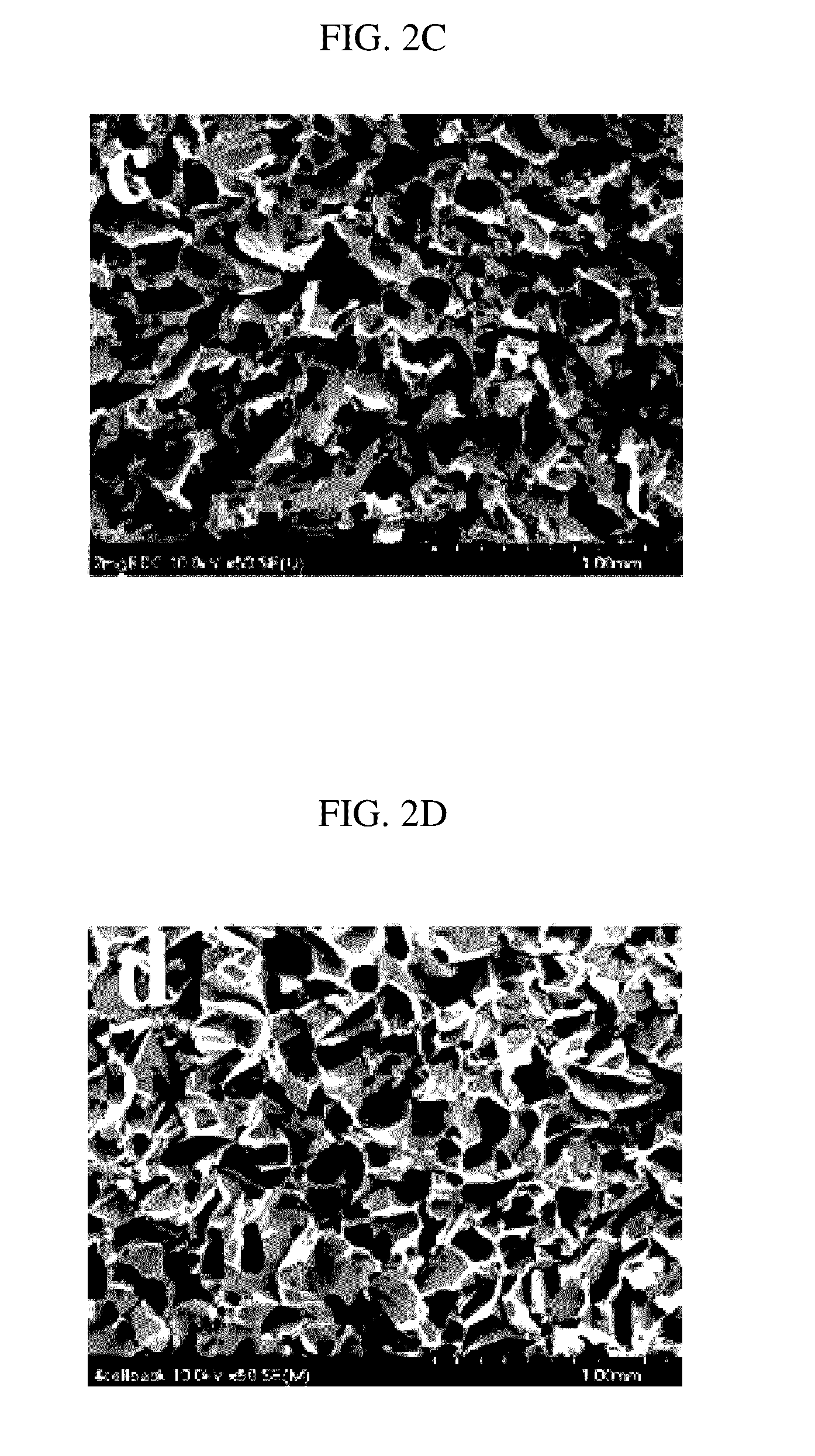Hybrid hollow microcapsule, scaffold for soft tissue including same, and methods of preparing same
a hybrid and soft tissue technology, applied in the field of hybrid hollow microcapsule, a soft tissue including the same, and a method of preparing the same, can solve the problems of not having elastic resilience, scaffolds are fragile and not recovered, and scaffolds are considered to have a slow rate of decomposition, etc., to achieve excellent stability, increase mechanical properties and stability, and high yield
- Summary
- Abstract
- Description
- Claims
- Application Information
AI Technical Summary
Benefits of technology
Problems solved by technology
Method used
Image
Examples
example
Example 1
Preparation of Hydroxyapatite / Gelatin Scaffold Crosslinked Using EDC as a Crosslinking Agent and Examination of Properties (Citrate-Capped HAp @ EDC-Crosslinked Gelatin)
[0106]Hydroxyapatite nanoparticles capped with citrates and coated with gelatin (porcine derived B type gelatin) in a size of ˜200 nm were crosslinked at −18° C. to prepare soft and resiliently recoverable macroporous hydroxyapatite / gelatin scaffolds. The final solution prior to freezing was maintained such that a weight ratio of a polymer to particles was 1:10. Namely, 60 mg of particles were coated with 6 mg of gelatin in 0.6 mL deionized water, and the amount of EDC was changed to 0.1 mg, 0.5 mg, 2 mg and 4 mg (SEM images of FIGS. 2A to 2D SEM). FIG. 1A is a digital image of 4 mg EDC scaffolds, which clearly shows that the scaffolds recovered their shape after high compressive strain. The particles were intensely mixed with gelatin, stirred and coated, and EDC was added thereto as a crosslinking agent pri...
example 2
Preparation of Crosslinked Silica / Gelatin Scaffold Using EDC Crosslinking Agent (Silica @ EDC-Crosslinked Gelatin)
[0115]10% by weight of silica nanoparticles having a size of 500 nm were vortexed in an e-tube such that the nanoparticles were coated with 1% gelatin. The volume of the final solution was 0.6 mL wherein amounts of particles and polymers were 60 mg and 6 mg, respectively. 4 mg of an EDC crosslinking agent was added to the final solution, followed by freezing at −18° C. for 24 hours to complete crosslinking. Mechanical properties of the obtained scaffold were similar to those of the scaffold obtained in Example 1 comprising 10% hydroxyapatite / 1% gelatin / 4 mg EDC (FIG. 2F). Walls of the scaffold mainly consisted of silica particles.
example 3
Preparation of Scaffolds Comprising Crosslinked PLGA / Gelatin Using EDC Crosslinking Agent (PLGA @ EDC-Crosslinked Gelatin)
[0116]PLGA nanoparticles having a size of about 500 nm were synthesized by solvent emulsification. In order to improve stability of a PLGA suspension in water, the obtained particles were coated with gelatin. A suspension of the coated particles was heated to 45° C. to increase stability thereof. Weight ratio of particles to polymers was 10:1. 0.6 mL of the final deionized suspension had EDC in amounts of 4 mg. Crosslinking was performed at −25° C. for 24 hours.
PUM
| Property | Measurement | Unit |
|---|---|---|
| thickness | aaaaa | aaaaa |
| thickness | aaaaa | aaaaa |
| thickness | aaaaa | aaaaa |
Abstract
Description
Claims
Application Information
 Login to View More
Login to View More - R&D
- Intellectual Property
- Life Sciences
- Materials
- Tech Scout
- Unparalleled Data Quality
- Higher Quality Content
- 60% Fewer Hallucinations
Browse by: Latest US Patents, China's latest patents, Technical Efficacy Thesaurus, Application Domain, Technology Topic, Popular Technical Reports.
© 2025 PatSnap. All rights reserved.Legal|Privacy policy|Modern Slavery Act Transparency Statement|Sitemap|About US| Contact US: help@patsnap.com



